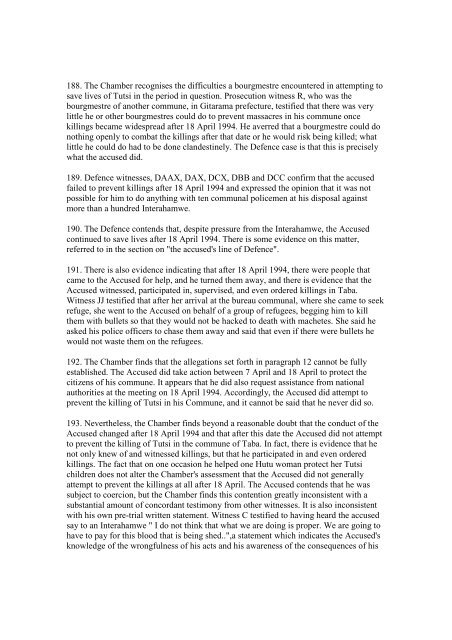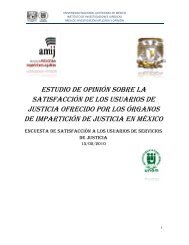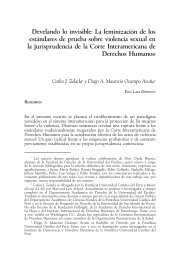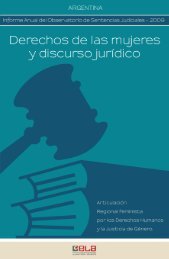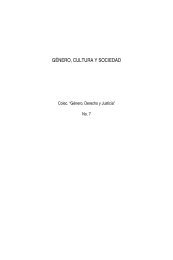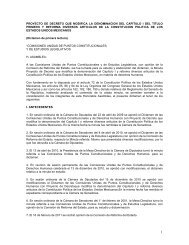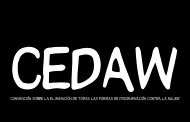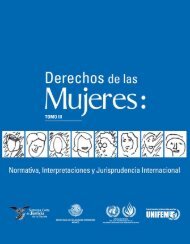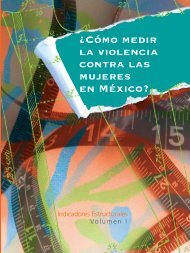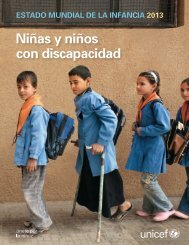188. The Chamber recognises the difficulties a bourgmestre encountered in attempting tosave lives of Tutsi in the period in question. Prosecution witness R, who was thebourgmestre of another commune, in Gitarama prefecture, testified that there was verylittle he or other bourgmestres could do to prevent massacres in his commune oncekillings became widespread after 18 April 1994. He averred that a bourgmestre could donothing openly to combat the killings after that date or he would risk being killed; whatlittle he could do had to be done clandestinely. The Defence case is that this is preciselywhat the accused did.189. Defence witnesses, DAAX, DAX, DCX, DBB and DCC confirm that the accusedfailed to prevent killings after 18 April 1994 and expressed the opinion that it was notpossible <strong>for</strong> him to do anything with ten communal policemen at his disposal againstmore than a hundred Interahamwe.190. The Defence contends that, despite pressure from the Interahamwe, the Accusedcontinued to save lives after 18 April 1994. There is some evidence on this matter,referred to in the section on "the accused's line of Defence".191. There is also evidence indicating that after 18 April 1994, there were people thatcame to the Accused <strong>for</strong> help, and he turned them away, and there is evidence that theAccused witnessed, participated in, supervised, and even ordered killings in Taba.Witness JJ testified that after her arrival at the bureau communal, where she came to seekrefuge, she went to the Accused on behalf of a group of refugees, begging him to killthem with bullets so that they would not be hacked to death with machetes. She said heasked his police officers to chase them away and said that even if there were bullets hewould not waste them on the refugees.192. The Chamber finds that the allegations set <strong>for</strong>th in paragraph 12 cannot be fullyestablished. The Accused did take action between 7 April and 18 April to protect thecitizens of his commune. It appears that he did also request assistance from nationalauthorities at the meeting on 18 April 1994. Accordingly, the Accused did attempt toprevent the killing of Tutsi in his Commune, and it cannot be said that he never did so.193. Nevertheless, the Chamber finds beyond a reasonable doubt that the conduct of theAccused changed after 18 April 1994 and that after this date the Accused did not attemptto prevent the killing of Tutsi in the commune of Taba. In fact, there is evidence that henot only knew of and witnessed killings, but that he participated in and even orderedkillings. The fact that on one occasion he helped one Hutu woman protect her Tutsichildren does not alter the Chamber's assessment that the Accused did not generallyattempt to prevent the killings at all after 18 April. The Accused contends that he wassubject to coercion, but the Chamber finds this contention greatly inconsistent with asubstantial amount of concordant testimony from other witnesses. It is also inconsistentwith his own pre-trial written statement. Witness C testified to having heard the accusedsay to an Interahamwe " I do not think that what we are doing is proper. We are going tohave to pay <strong>for</strong> this blood that is being shed..",a statement which indicates the Accused'sknowledge of the wrongfulness of his acts and his awareness of the consequences of his
deeds. For these reasons, the Chamber does not accept the testimony of the Accusedregarding his conduct after 18 April, and finds beyond a reasonable doubt that he did notattempt to prevent killings of Tutsi after this date. Whether he had the power to do so isnot at issue, as he never even tried and as there is evidence establishing beyond areasonable doubt that he consciously chose the course of collaboration with violenceagainst Tutsi rather than shielding them from it.5.2.2. Paragraph 13 of the IndictmentAlleged facts:194. Paragraph 13 of the Indictment is worded as follows:"On or about 19 April 1994, be<strong>for</strong>e dawn, in Gishyeshye sector, Taba commune, a groupof men, one of whom was named François Ndimubanzi, killed a local teacher, SylvèreKarera, because he was accused of associating with the <strong>Rwanda</strong>n Patriotic Front ("RPF")and plotting to kill Hutu. Even though at least one of the perpetrators was turned over toJean-Paul Akayesu, he failed to take measures to have him arrested".195. It is alleged that, by the acts with which he is charged in this paragraph, Akayesu isguilty of the offences which <strong>for</strong>m the subject of three counts:Count 1 of the Indictment charges him with the crime of genocide, punishable underArticle 2(3)(a) of the Statute;Count 2 charges him with the crime of complicity in genocide, punishable under Article2(3)(e) of the Statute; andCount 3 charges him with the crime of extermination which is a Crime against Humanity,punishable under Article 3(b) of the Statute.1<strong>96</strong>. In order to prove the acts alleged against Akayesu under paragraph 13 of theIndictment, it is necessary to first establish that Sylvère Karera, a teacher, was killed inthe Gishyeshye sector, Taba commune, on 19 April 1994, be<strong>for</strong>e dawn, by a group ofmen, one of whom was named François Ndimubanzi and that he was killed because hewas accused of associating with the RPF and plotting to kill Hutu. The Chamber mustthen be satisfied that at least one of the perpetrators of this killing was indeed turned overto Jean-Paul Akayesu, and that he failed to take measures to have him arrested.With regard to the killing of Sylvère Karera in the Gishyeshye sector, Tabacommune, on or about 19 April 1994, be<strong>for</strong>e dawn:197. Several Prosecution witnesses, particularly, those who appeared under thepseudonyms A, W, E and U, as well as Ephrem Karangwa, provided in<strong>for</strong>mation on thekilling of teacher Sylvère Karera in the night of 18 to 19 April 1994.198. Witness A, a Hutu man, testified that, during the night of 18 to 19 April 1994, heheard people shouting that thieves had killed people at Remera school and calling on the
- Page 2 and 3:
1.2. The Indictment1.3. Jurisdictio
- Page 4 and 5:
eports2 which indicated that acts o
- Page 6 and 7: 3. Jean Paul AKAYESU, born in 1953
- Page 8 and 9: 16. Jean Paul AKAYESU, on or about
- Page 10 and 11: Counts 7-8(Crimes Against Humanity)
- Page 12 and 13: c) Deliberately inflicting on the g
- Page 14 and 15: 1.4. The Trial1.4.1. Procedural Bac
- Page 16 and 17: y the opening statement for the Def
- Page 18 and 19: y the Tribunal for crimes related t
- Page 20 and 21: 38. Regarding the Gishyeshye meetin
- Page 22 and 23: witness was lying because he or she
- Page 24 and 25: in the commune. His de facto author
- Page 26 and 27: 70. Apart from asking the prefect t
- Page 28 and 29: 84. According to the testimony of D
- Page 30: Scores of political leaders were im
- Page 33 and 34: his listeners to avoid the error of
- Page 35 and 36: 111. The killing of Tutsi which hen
- Page 37 and 38: killed on the grounds that the foet
- Page 39 and 40: 128. In conclusion, it should be st
- Page 41 and 42: Witness statements137. During the t
- Page 43 and 44: protection of witnesses issued by t
- Page 45 and 46: covered anyone who had anti-Tutsi t
- Page 47 and 48: Tutsi and the Tutsi were accused of
- Page 49 and 50: as "two armies", "two belligerents"
- Page 51 and 52: "The primary criterion for [definin
- Page 53 and 54: 180. Many witnesses testified regar
- Page 55: stated in that Decision, it did not
- Page 59 and 60: Concerning the allegation that at l
- Page 61 and 62: turned over alive to Akayesu, and t
- Page 63 and 64: younger brothers. He stated that he
- Page 65 and 66: 237. Karangwa testified under cross
- Page 67 and 68: three brothers lie on their stomach
- Page 69 and 70: known as Usuri (phonetic spelling)
- Page 71 and 72: Karangwa's explanation for the inco
- Page 73 and 74: Count 3, Crimes against Humanity (e
- Page 75 and 76: those killed were professors from R
- Page 77 and 78: 290. Witness DCC for the Defence, d
- Page 79 and 80: children, and old people. The Chamb
- Page 81 and 82: further that he had not heard of Ak
- Page 83 and 84: to fetch the one who remains', a pr
- Page 85 and 86: sector councillors called on the cr
- Page 87 and 88: According to witness A, the bourgme
- Page 89 and 90: present took it to mean that the Tu
- Page 91 and 92: 355. The Accused himself confirmed
- Page 93 and 94: 364. Paragraph 15 of the Indictment
- Page 95 and 96: The witness said a certain Françoi
- Page 97 and 98: has not been proved beyond reasonab
- Page 99 and 100: who had come to his house. He said
- Page 101 and 102: Interahamwe at the entrance, carryi
- Page 103 and 104: ack to the bureau communal and on t
- Page 105 and 106: Victim Y (Witness N), a [68] year o
- Page 107 and 108:
which were at times committed by mo
- Page 109 and 110:
communal into a forest in the area
- Page 111 and 112:
clubbing a young teacher who had be
- Page 113 and 114:
434. Two days after arriving at the
- Page 115 and 116:
he went into hiding during the mass
- Page 117 and 118:
ureau communal, but he insisted tha
- Page 119 and 120:
taken away from the bureau communal
- Page 121 and 122:
The Accused himself testified that
- Page 123 and 124:
464. In that case, when the matter
- Page 125 and 126:
"A person who planned, instigated,
- Page 127 and 128:
involve facilitating the commission
- Page 129 and 130:
493. In accordance with the said pr
- Page 131 and 132:
Deliberately inflicting on the grou
- Page 133 and 134:
y a psychological relationship betw
- Page 135 and 136:
Chamber notes that, as stated above
- Page 137 and 138:
• complicity by procuring means,
- Page 139 and 140:
547. Consequently, where a person i
- Page 141 and 142:
underscoring their commitment to se
- Page 143 and 144:
character134. In fact, the concept
- Page 145 and 146:
575. The definition of crimes again
- Page 147 and 148:
grounds mentioned in Article 3 of t
- Page 149 and 150:
accepted definition of this term in
- Page 151 and 152:
adopted primarily to protect the vi
- Page 153 and 154:
610. Whilst the Chamber is very muc
- Page 155 and 156:
description, namely, what constitut
- Page 157 and 158:
forces to plan and carry out concer
- Page 159 and 160:
635. There is no clear provision on
- Page 161 and 162:
7.2. Count 5 - Crimes against human
- Page 163 and 164:
663. The definition of crimes again
- Page 165 and 166:
677. The Tribunal notes that eviden
- Page 167 and 168:
685. In the light of its factual fi
- Page 169 and 170:
692. The Tribunal finds, under Arti
- Page 171 and 172:
determine, as far as each proven fa
- Page 173 and 174:
the Tutsi in general. Akayesu who h
- Page 175 and 176:
722. As regards the allegations in
- Page 177 and 178:
732. The rape of Tutsi women was sy
- Page 179 and 180:
Chamber finds beyond a reasonable d
- Page 181 and 182:
Footnote 11. Decision: Order for Co
- Page 183 and 184:
Footnote 41. Article 104 of the Loi
- Page 185 and 186:
Footnote 68. Dictionnaire Rwandais-
- Page 187 and 188:
Footnote 103. "Principles of Intern
- Page 189 and 190:
Footnote 134. Secretary General's R
- Page 191:
Footnote 171. See General Legal Fin


